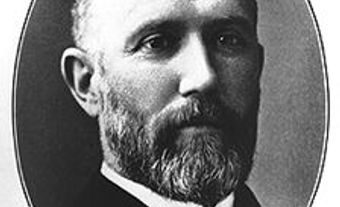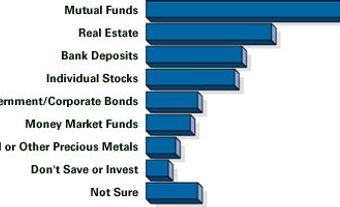Toronto Stock Exchange
The Toronto Stock Exchange (TSX) is one of North America's oldest and largest stock exchanges. The main function of a stock exchange is to serve as a central meeting place for those who seek investment in their company and those who are willing to provide such investment. Share certificates provide proof of such investment and are auctioned off to the highest bidder, resulting in a trade during which the share certificate or some other proof of the transaction is exchanged for the funds to be invested.
The TSX is Canada's principal stock exchange. Nominally, the trading of securities such as shares is regulated at the provincial level and, until the late 1990s, some provinces operated their own exchanges. In 1999 the TSX was designated as the only exchange for the trading of senior equities whereas the Montréal stock exchange, operating as the "Canadian Derivatives Exchange," became responsible for the trading of derivatives (futures, options, forward contracts), and the Vancouver, Alberta and Winnipeg exchanges merged to provide a trading environment for junior equities (venture/start-up capital) under the banner of Canadian Venture Exchange (CDNX).
At the end of 2003, the TSX was home to 1340 companies representing a total market capitalization (number of shares outstanding times share price) of some $1.3 trillion. Over the course of its existence it has been at the forefront of efforts to reinvent the business of trading worldwide.
History
The TSX traces its informal beginnings back to the formation of an association of brokers by 12 Canadian businessmen in 1852. On 25 October 1861 the stock exchange was officially founded through the passage of a formal resolution at Toronto's Masonic Hall. A total of 18 stocks could be traded. Trading in the early days consisted of half-hour sessions, which allowed for small numbers of trades.
In 1871 there were 14 firms that traded stocks on the exchange, having paid $250 each for the privilege, a so-called "seat." By 1901 the price for a seat had risen to $12 000 and trading volume was close to one million shares per day. The increased popularity of stock trading caused the exchange to move to bigger offices. In total, the exchange moved five times over the course of its existence and today is located in the Exchange Tower at 130 King Street West in Toronto.
The onset of World War I caused the exchange to suspend operations on 28 July 1914 (one month after the war broke out) as a result of the prevailing uncertainty in financial markets; the New York Stock Exchange did so as well.
The stock market crash of 1929 did not have any significant effect on Canadian trading activity. While more than 2000 investment and brokerage firms went out of business in the US, no members of the Toronto Stock Exchange went into default.
In 1955 the price for a seat rose to $100 000, and in 1958 the TSX began to require formal disclosures from its listed companies concerning anything that could influence the price of their respective offerings.
The TSX became the world's first stock exchange to introduce computer-assisted trading, in 1977, and, in the same year, created the TSE 300 index, an indicator similar to the Dow Jones Index for the New York Stock Exchange, comprising 300 representative stocks that are reviewed on a regular basis. The TSE 300 was followed by the Toronto 35, made up of 35 of Canada's largest corporations, in 1987, the same year that the world's stock markets "crashed," pushing all major indices into a freefall. The TSE 300 dropped by more than 300 points and the TSX overall lost $37 billion, or 11.3 percent of its value.
In the late 1990s the TSX provided leadership in a number of areas: it became the first exchange to introduce decimal trading (switching from fractions); it became the largest North American stock exchange to move to a completely electronic trading environment; and the TSX was the first exchange to have a female president, Barbara G. Stymiest, who immediately embarked on a major reorganization of the exchange's activities.
In 1999 the exchanges in Vancouver, Calgary (known as the "Alberta Stock Exchange"), and Montréal agreed to focus on specialty trades, leaving the TSX to handle the vast majority of the trading services. The Vancouver and Alberta Stock Exchanges joined to form the Canadian Venture Exchange (CDNX), which focused on junior stocks. It was also agreed at that time that the Winnipeg Stock Exchange would become a CDNX member as well. It formally joined in late 2000. The Montréal stock exchange became the centre for the trading of futures, options, and other derivatives. Also in 1999, the TSX paved the way for turning itself into a public company by obtaining vice-regal assent to become a for-profit organization.
The beginning of the 21st century saw the TSX consolidate its own activities and those of other exchanges across the country even further - under the umbrella of the TSX Group. The Canadian Venture Exchange ceased to exist and became the TSX Venture Exchange while the Montréal exchange continued to be responsible for the trading of derivatives. This move all but cemented the TSX Group's role as the country's national stock market operator and regulator in spite of the absence of a formal national mandate.
In 2002 the TSX went public and was thus placed in the curious position of trading its own shares, necessitating a stronger focus on independence and corporate governance among its board of directors. Among other steps it took to preserve its integrity was the transfer of regulatory duties to Market Regulation Services Inc and the Investment Dealers Association. In the same year, Standard and Poor's assumed responsibility for the TSE 300 index, which was subsequently rebranded the "S & P/TSX Composite Index."
2004 saw the expansion of the TSX's activities into the trading of natural resources when it acquired NGX Canada Inc, an exchange dealing in electricity and natural gas contracts.
Scope of Activities
The TSX Group today operates all of the Canadian stock markets as well as an exchange where natural gas and electricity contracts are traded, NGX Canada Inc. In addition, the group re-sells data of the activity occurring on its exchanges through a venture called TSX Datalinx, and also provides technology products and services to third-party clients such as the Shanghai Stock Exchange.
Companies just starting out as a public company are listed on the Venture Exchange, the marketplace for so-called "junior stocks." Once they have proven themselves as a public company and gained sufficient financial flexibility, they may then attempt to "graduate" to the main exchange, the Toronto Stock Exchange.
How to List
A company wishing to list and continue to be listed must meet strict requirements and conform to a set of rules. For example, companies must have at least one million shares that can be traded freely with a market value of at least $4 million ($10 million for a "Technology Company"). These shares must be held by at least 300 shareholders who, in turn, must hold a minimum number of shares, a so-called "board lot." Companies must also provide references and, if they belong to a certain industry, meet additional, industry-specific requirements. Listing fees for Canadian companies are between $15 000 and $150 000 per class of share a company wishes to list. Following a successful listing, the company must then pay fees on a regular basis to maintain its listing. In addition, a number of other fees are payable to investment dealers, provincial securities commissions, and professionals such as lawyers or accountants.
New companies wishing to list early in their existence and requiring an influx of capital to continue to develop can list on the TSX Venture Exchange. The TSX Venture Exchange is much more than a stock market; it offers a comprehensive support system including access to legal, financial and other professionals that can help the company to meet the listing requirements. The TSX Venture Exchange has its own fee schedule and, on an aggregate basis, the fees are lower than for companies wishing to list on the main exchange.
Trading Activity
Trading activity on the exchanges of the TSX Group is dependent on several factors such as the economy, industry or company developments and resulting investor confidence. Academic researchers spend a lot of time trying to determine the influences in a precise manner but, in general, stock market indices are taken as a proxy for the overall health of the economy.
See also STOCKS AND BONDS.

 Share on Facebook
Share on Facebook Share on X
Share on X Share by Email
Share by Email Share on Google Classroom
Share on Google Classroom


